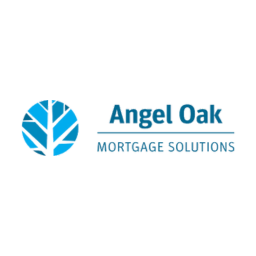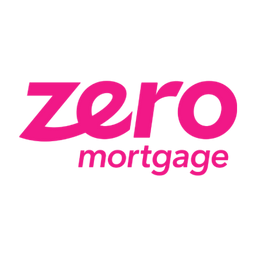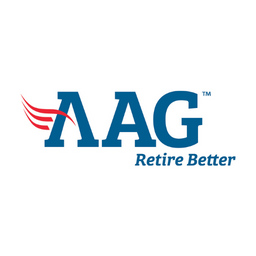Are you in the market for a reverse mortgage? If so, you’ve probably considered multiple factors, including the fees and interest rates that come with these home loan products. This guide explores reverse mortgage interest rates, how they’re calculated and how to choose between a fixed and a variable rate.
Reverse Mortgages and Interest Rates
A Home Equity Conversion Mortgage (HECM) is the most common type of reverse mortgage loan. It’s also insured by the federal government. Current rates are between 6.680% and 7.060% for fixed-rate loans and 6.280% and 7.030% for adjustable-rate loans as of April 11, 2023, according to All Reverse Mortgage, Inc.
How Interest Rates Work on a Reverse Mortgage
Seniors use reverse mortgages to convert their home equity into cash. The funds are often used to supplement their retirement income. They are typically disbursed in installments, as a lump sum or through a line of credit. But unlike traditional home loans, reverse mortgages do not require principal and interest payments.
The homeowner must maintain the property by keeping it in good condition and staying current with property taxes, homeowners insurance and association fees. However, the reverse mortgage balance (including any accrued interest and fees) doesn’t become payable until the homeowner relocates, sells the property, passes away or fails to comply with the loan agreement by not properly maintaining the home. An exception to this rule applies if the homeowner is married and their spouse remains in the house after they pass away or relocate.
You should also know that interest accrues on reverse mortgages as long as they’re active. But as mentioned above, repayment is deferred until the loan term ends.
Types of Interest Rates
Reverse mortgages come with both fixed and variable or adjustable interest rates.
Fixed Rates
If you get a reverse mortgage with a fixed interest rate, it remains the same for the duration of the loan. While the borrowing costs are more predictable, the interest rate you’ll receive is likely higher than the initial rate you’d get with a variable-rate loan. It’s important to note that opting for a fixed-rate HECM means you’re required to receive the loan proceeds in a lump sum.
Also, be mindful of the 60 percent utilization rate that applies to fixed-rate HECMs. The loan amount is limited to the greater of the:
- 60 percent of the available principal, excluding mandatory obligations
- 10 percent of the available principal and all mandatory obligations
Variable/Adjustable Rates
As the name implies, variable or adjustable-rate HECMs have a fluctuating interest rate that changes over the life of the loan. However, it’s limited to the life cap, which means you’ll know the maximum interest rate you can receive. The initial interest rate on variable-rate reverse mortgages is also generally lower than on fixed-rate reverse mortgages.
Borrowers can receive loan proceeds monthly, in a lump sum or as a line of credit. Or you can receive the funds through a combination of all three methods.
Like fixed-rate HECMs, variable-rate loans received in a lump sum also adhere to the 60 percent rule. However, if you opt for a monthly disbursement or line of credit, you’ll also pay interest on the funds you receive.
If you choose a variable HECM, you should also be mindful of the following:
- Initial Rate: It’s the rate you receive at closing and applies for the first year of the reverse mortgage. However, it’ll likely change over time with market conditions.
- Expected Rate: It’s the ten-year average and is used by the lender to determine how much home equity is accessible to you. Lenders also use the expected rate when calculating the service fee and monthly disbursement amount if you choose this funding method.
How Interest Rates on a Reverse Mortgage Are Calculated
Several factors are used to determine the interest rates on reverse mortgages. For example, the rate you receive will depend on the type of reverse mortgage you select, your age and your life expectancy. Lenders also consider your property’s value, the zip code, if any liens or mortgages are on the home, the number of years you’re expected to remain in the house and the disbursement option you select.
HECM Reverse Mortgage vs. HECM for Purchase
The interest rate varies depending on if you’re taking out a reverse mortgage or purchase loan. You’ll typically get a lower interest rate with most lenders if you take out the latter.
Age and Life Expectancy
Lenders also consider your age when deciding what interest rate you’ll receive. Older borrowers typically get lower interest rates than younger borrowers because the payout period is likely shorter.
Home’s Value
If your home is worth a sizable amount, you’ll likely qualify for a larger reverse mortgage. In turn, your interest rate could also follow suit.
Property Zip Code
Lenders assess geographic regions when setting interest rates. Depending on the market conditions and average home values in your area, your interest rate can be high or low.
Existing Mortgages or Liens
Homes with existing mortgages and liens are riskier in the eyes of lenders. Consequently, they may charge higher interest rates to minimize the impact of potential financial losses if the borrower fails to adhere to the reverse mortgage agreement.
Expected Years in the House
The number of years a borrower expects to remain in the home can also impact the rate on a reverse mortgage.
Disbursement Option
Disbursement options are another vital consideration when rates are set. It depends on if you choose to receive funding in a lump sum, through monthly payments, a line of credit or a combination of these options.
How to Choose Between Fixed vs. Variable Rates
When deciding between a fixed rate or variable rate reverse mortgage, keep these benefits and drawbacks in mind.
Pros and Cons of Fixed Rates
Before applying for a reverse mortgage, consider the benefits and drawbacks to help make an informed decision.
Pros of fixed-rate reverse mortgages:
- The interest rate remains the same over the life of the loan.
- You’ll have an idea of how much interest will accrue on the loan over time.
- It’s easier to identify the best reverse mortgage loan offers since the interest rate won’t change over the loan term.
Cons of fixed-rate reverse mortgages:
- You’re required to take a lump-sum payment at closing.
- You could pay more in fees when you take out a reverse mortgage.
- You may have to accept a lower loan amount than you would with a variable-rate loan.
Pros and Cons of Variable Rates
Let’s review the pros and cons of the variable rate ones.
Pros of variable-rate reverse mortgages:
- Your initial interest rate could be far lower than that of a fixed-rate reverse mortgage.
- You can choose to receive your funding in three different ways.
- You may be able to access more funds with lower upfront costs.
Cons of variable-rate reverse mortgages:
- The interest rate fluctuates over the life of the loan.
- It’s challenging to compare reverse mortgage quotes from various lenders.
- You could accrue a more considerable amount of interest over time, making the reverse mortgage more costly.











